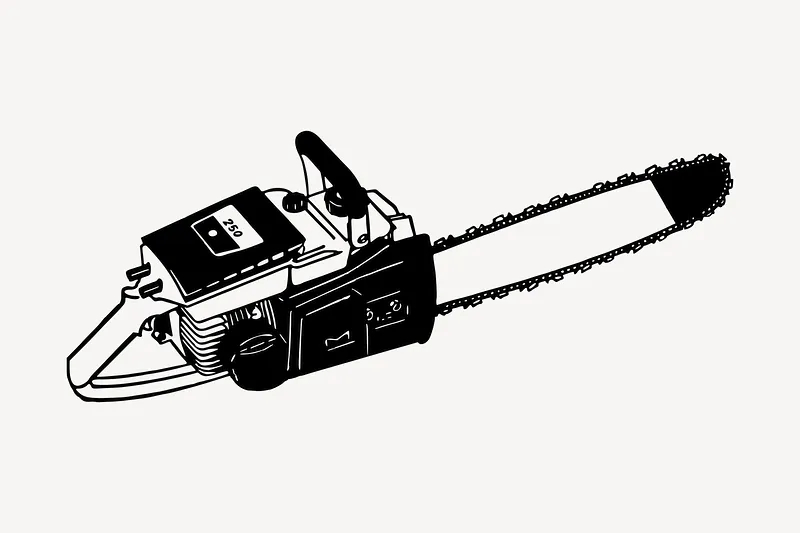A Flooded chainsaw Means a situation in which too much fuel has been delivered to the engine of a chainsaw, causing it to not start or run poorly. This can happen if the chainsaw’s carburetor is not adjusted properly or if the air filter is dirty.
To fix a flooded chainsaw, the excess fuel needs to be cleared out of the engine before attempting to start it again. This can be done by opening the choke and pulling the starter cord several times to clear the fuel out of the carburetor.
Contents
How To Start a Flooded Chainsaw
Starting a Flooded chainsaw can be a bit tricky, but with the right steps, it can be done. Here’s how you can start a flooded chainsaw:
- Remove the spark plug and pour about a tablespoon of fresh gasoline into the cylinder. This will help to clear out any excess water or moisture that may have gotten into the engine.
- Dry off the spark plug and reattach it to the chainsaw.
- Move the chainsaw to a dry area and set it on a stable surface.
- Pull the starter cord several times to help circulate the gasoline and clear out any remaining water.
- After a few pulls, the chainsaw should start to sputter and eventually start. If it doesn’t start, try the following:
- Check the fuel line for any kinks or blockages
- Make sure the spark plug is tightened and seated properly
- Check the fuel filter for any dirt or debris
If the chainsaw still won’t start, it may need to be taken to a professional for further inspection.
Why Do Chainsaws Flood?
Chainsaws Can Flood for several reasons:
- Carburetor adjustment: If the carburetor is not adjusted properly, it can cause too much fuel to be delivered to the engine, leading to flooding.
- Dirty air filter: A dirty air filter can restrict airflow to the engine, which can cause a rich fuel mixture and flooding.
- Clogged fuel filter: A clogged fuel filter can prevent the proper amount of fuel from reaching the carburetor, causing flooding.
- Leaking fuel: A leak in the fuel system can cause an excessive amount of fuel to enter the engine, leading to flooding.
- Overfilling the fuel tank: If the fuel tank is overfilled, fuel can spill into the carburetor and flood the engine.
- Using old fuel: Gasoline that has been sitting for a long time can go bad, causing the carburetor to flood.
By identifying and addressing the cause of the flooding, you can prevent it from happening again and ensure that the chainsaw runs properly.
Signs Of a Flooded Chainsaw
There are several signs that your chainsaw may be flooded, the chainsaw is difficult to start, or won’t start at all. There is a strong smell of gasoline coming from the chainsaw.
chainsaw is running poorly or stalling when you try to use it. There is water or moisture present in the fuel system. The spark plug is wet or covered in gasoline.
If you notice any of these signs, it’s important to take steps to fix the problem as soon as possible. A flooded chainsaw can be dangerous to use and can cause damage to the engine if not properly addressed.
How Long Does It Take a Flooded Chainsaw To Start?
It can take a few minutes to start a flooded chainsaw, depending on the severity of the flooding and the condition of the chainsaw.
If the chainsaw still won’t start, it may need to be taken to a professional for further inspection.
It’s important to be patient and keep trying to start the chainsaw. It may take a few minutes, but eventually, it should start.
If it’s taking longer than a few minutes, or if you’re having difficulty starting the chainsaw, it’s a good idea to seek the help of a professional.
Will a Flooded Chainsaw Fix Itself?
A flooded chainsaw will not fix itself. The excess fuel needs to be cleared out of the engine before attempting to start it again. This can be done by opening the choke and pulling the starter cord several times to clear the fuel out of the carburetor.
If the chainsaw still does not start or runs poorly after clearing the excess fuel, it may be necessary to check the air filter and carburetor for proper adjustment or any other issues that may be causing the problem.
Can a Flooded Chainsaw be Repaired
Clearing the excess fuel from the engine is a temporary fix and does not address the underlying issue that caused the flooding in the first place.
If the chainsaw continues to flood or runs poorly after being cleared, it is likely that there is an issue with the carburetor or air filter that needs to be addressed.
It’s always best to have a professional look at the chainsaw if you are not familiar with troubleshooting and fixing the engine. If the chainsaw is under warranty, it’s best to have it checked by an authorized service center.
If it’s out of warranty, you can take it to a small engine repair shop or consult the chainsaw manual for troubleshooting advice.

